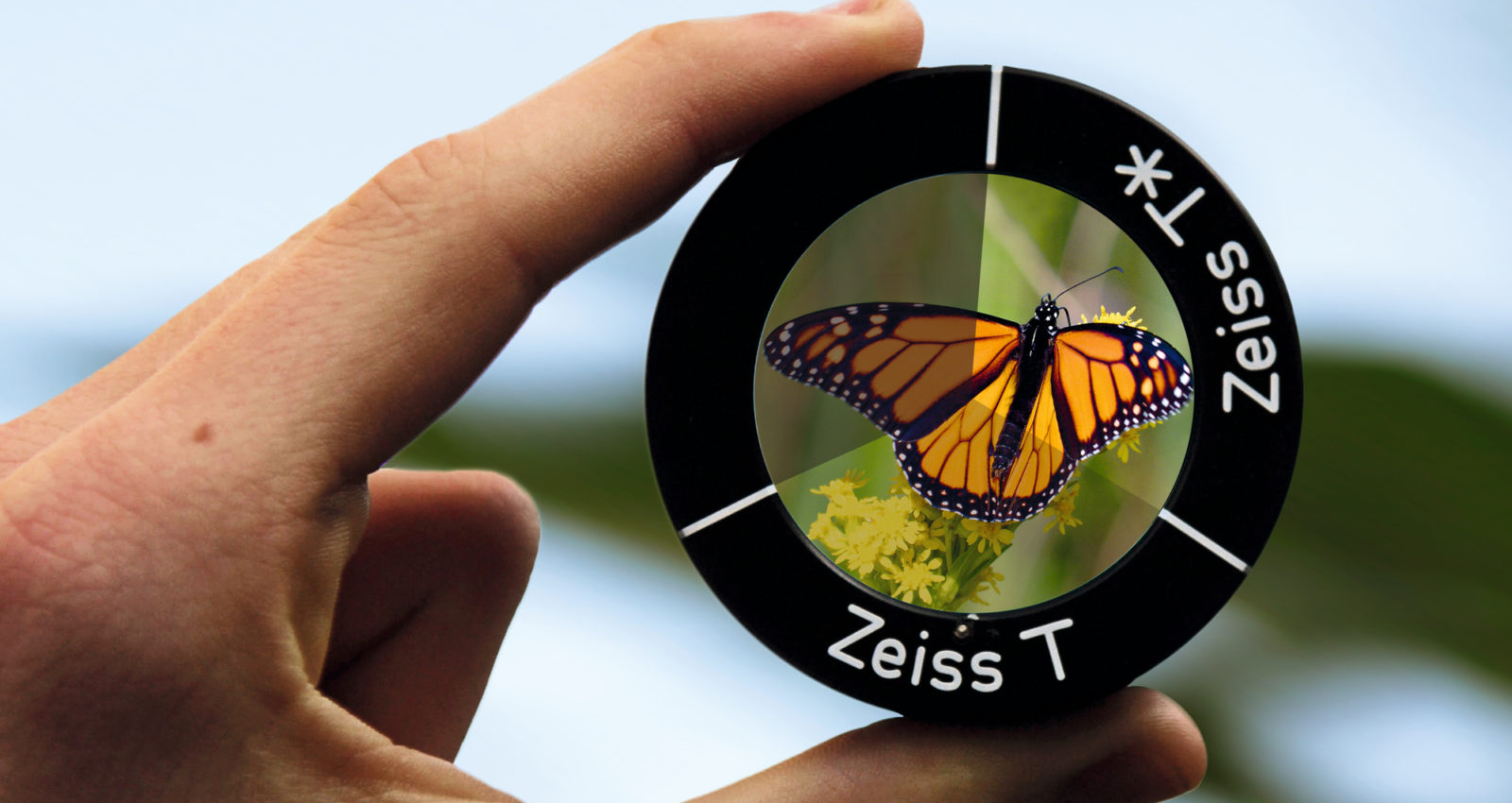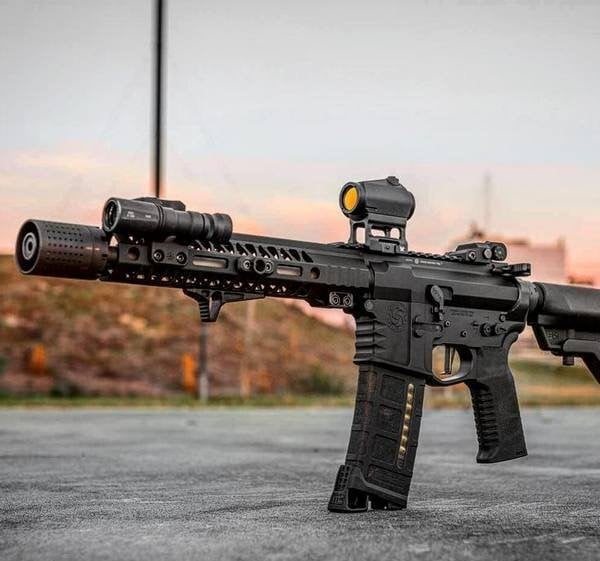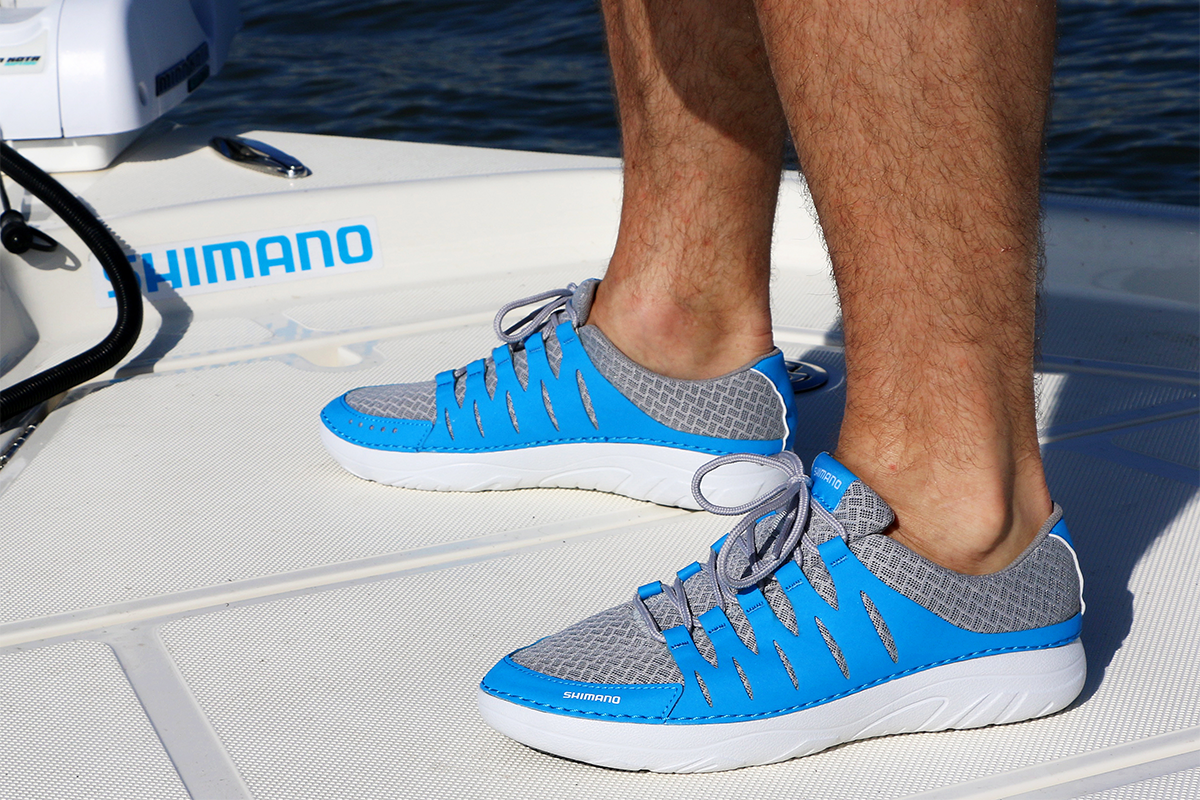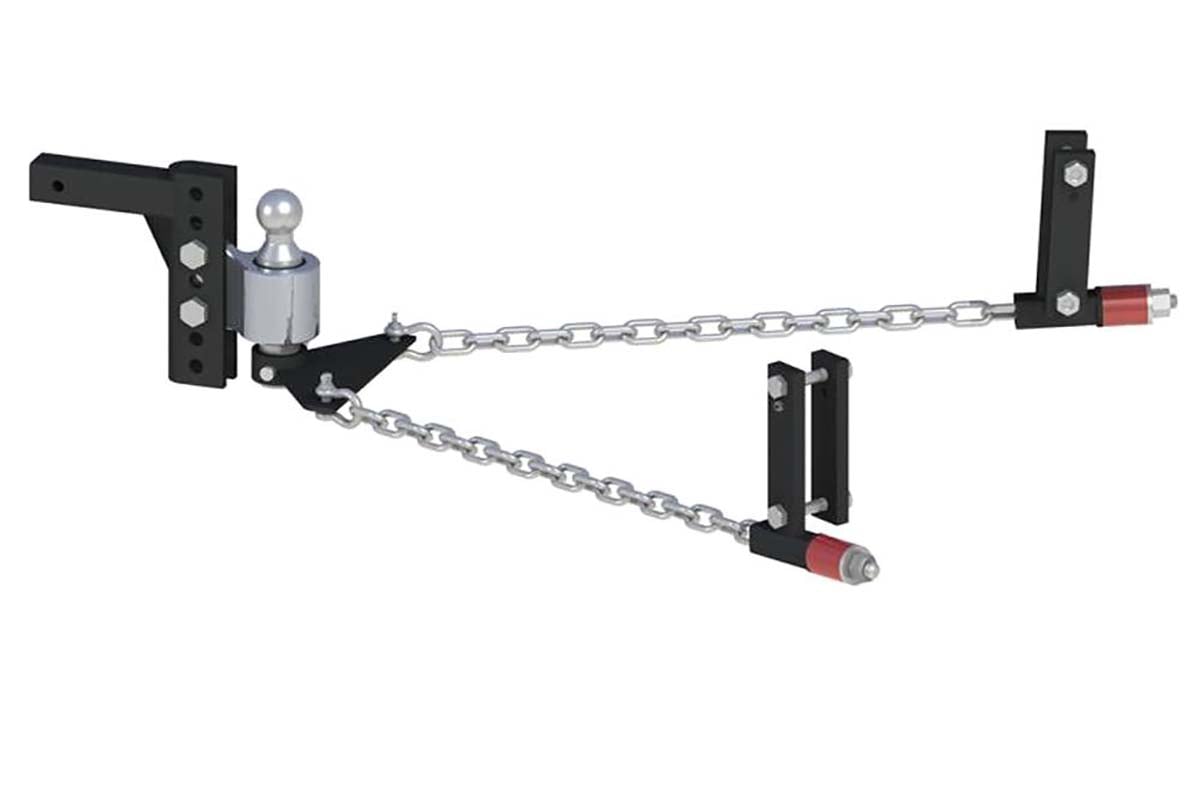Last Updated on
by Alexandr Naumovitch
Optics are a big chunk of what we offer at gritroutdoors.com. Binoculars and riflescopes have long been a usual sight for hunters. Even spotting scopes have become common over the years. Pretty much anyone involved knows the value of a good piece of optics. And yet there are optical devices that we believe deserve better recognition. Today we’ll scale down from our usual format of medium and high-power optics all the way to monoculars.
About Monoculars
Binocular vision is great. You can try looking with one and two eyes open, for comparison. If you’ve read our Vortex Razor UHD article, you know the drill. When looking with both eyes, you perceive depth. The picture seems three-dimensional and atmospheric. It comes at a price, though. Two optical paths come with twice as many lenses and prisms. Furthermore, the tubes must be aligned perfectly. Have you ever used slightly deformed binoculars with the tubes not quite pointing at the same spot? It doesn’t sound like a big deal, and it is a terrible headache.
Let’s get back to Zeiss monos. I don’t try to turn you against binoculars. Obviously, they have great perks of their own. But there is a tradeoff. With just one optical path, you can afford the same optical power at a lower price and with lighter weight.
Zeiss monoculars come with magnification ranging from moderate 4x to the more impressive 10x. Also, they vary in size depending on how light on your feet you want to be.
Zeiss Monocular Lineup
Zeiss monoculars are diverse enough to cover most scenarios. Varying in power, FOV, size and some less obvious parameters, one of these monoculars is bound to meet your needs.
Victory Mono 3×12 T*
The smallest model in the line. The 3x magnification is not something to boast. But the size and light weight let you use it wherever you go. Furthermore, you can use it as an image amplifier for Victory FL and Conquest line binoculars.
Conquest Mono Monoculars
Their similar design gives away the common origin, yet Conquest Monoculars differ hugely in power. 4x to 10x power lets you pick one for theater, for sporting events, or for scenery observation. The 4×12 fits in most pockets. It’s your go-to solution any time you’d love some magnification but not so desperately you’ll waste space on it.
As you need something more serious, look at larger and more powerful 6×18, and 10×25 models. The come in different size and power, yet they all have the clear, crisp picture you normally expect from Zeiss.
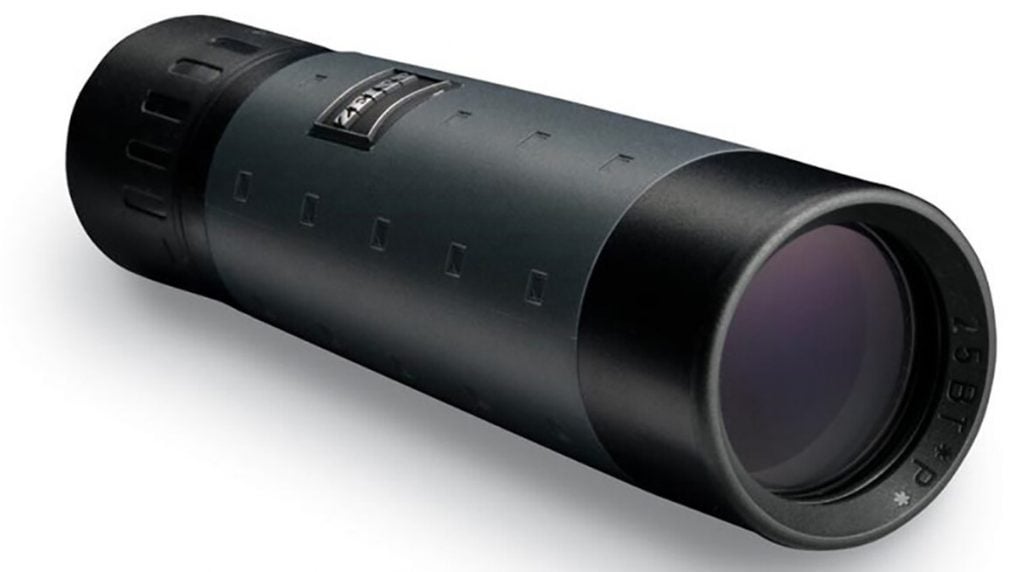
Conquest Miniquick 5×10 T*
The Conquest Miniquick 5×10 T* stands out visibly as the thinnest, yet longest of Zeiss monoculars. This is as thin as a 5x power device can get, with image clarity still at the top of the line.
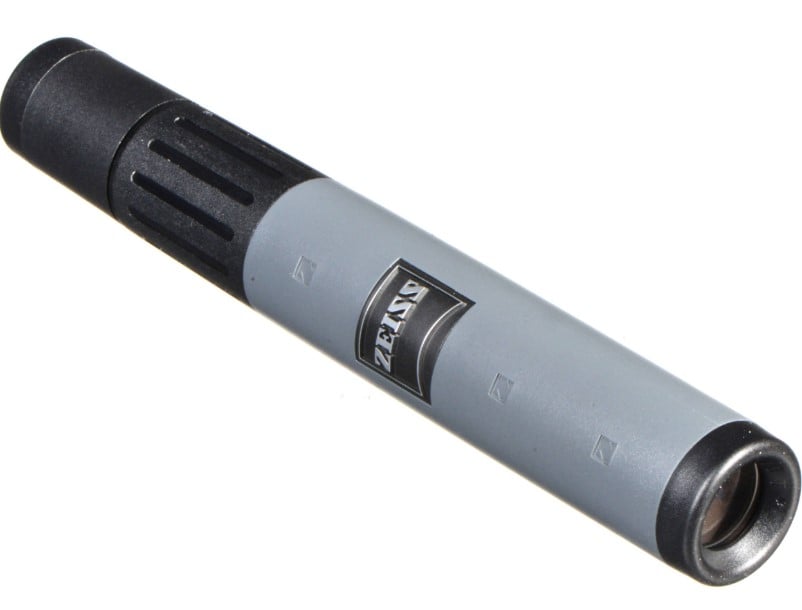
The full model line of Zeiss monoculars at gritroutdoors.com:
- Mono 4x12mm Monocular
- Mono 6x18mm Monocular
- Mono 10x25mm Monocular
- Miniquick 5x10mm Monocular
Zeiss Monoculars: Common Strengths
Although compact and relatively cheap, Zeiss Monoculars boast a lot of what distinguishes Zeiss’ higher tier optics.
T* Coating
Anti-reflective coatings are essential to eliminate “ghosting”. Ghosting, or ghost images can be desirable, but only in some cases of artistic photography. However, for most of us it brings more harm than good, especially when observing and not taking photos. Everything you see that is not there is either distraction from, or obstruction of the actual thing.
The T* is not a single technology but a combined name for Zeiss’ anti-reflective solutions. The solutions have added up and changed. Engineers behind the original T* coating would be surprised at how far those improvements went, all of them necessary to keep Zeiss at the top of the optical food chain.
LotuTec
Another proprietary coating by Zeiss, this one resisting water and grease. As drops of water spread on the optical surface, they distort the view. With the LotuTec water rolls off quickly leaving only tiny drops, too small to create a noticeable distortion.
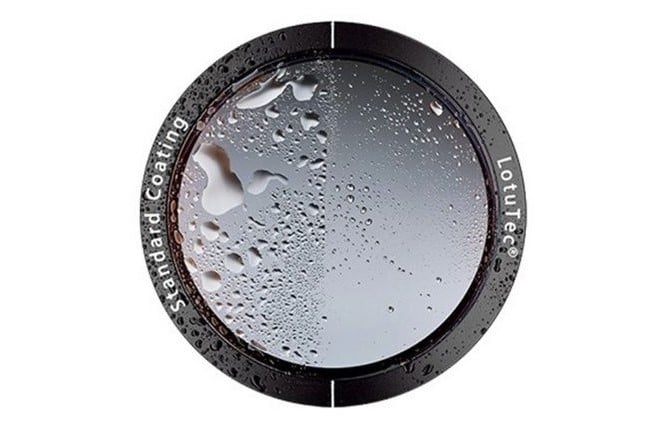
Nitrogen Filling
Each time your monocular gets into significantly colder or warmer surroundings, the temperature imbalance causes lenses to fog. To counter that, Zeiss monoculars’ internal spaces are sealed with airtight O-rings and filled with Nitrogen. Completely dry and airtight internal filling softens thermal temperature changes thus resisting thermal shock and completely removes internal fogging.
Close Contact
4x12mm and 6x18mm Zeiss Monoculars feature close focus distance of just under one foot. That is close enough to use them as magnifying glass or visual aid. Use them in theatre, at sporting events, on large open landscapes and in library alike.
Compact size
Finding space for Zeiss monoculars is very easy. If you have a bag or moderate-sized backpack, it will be easy to find an opening among the contents large enough even for the 10x25mm Mono. As for the smaller Mono 4x12mm, you don’t even need to find a spot for it in a bag, a loose enough pocket in your trousers of jacket will do.
Overall Impressions
Zeiss monoculars are compact, pocket friendly devices with image quality worthy of the famous name. The smallest of them offer enough power for reading and on-stage performances, while the largest can compete with many hunting binoculars. And they come at a noticeably lower price.
Shop gritroutdoors.com for optics by Zeiss and more.
